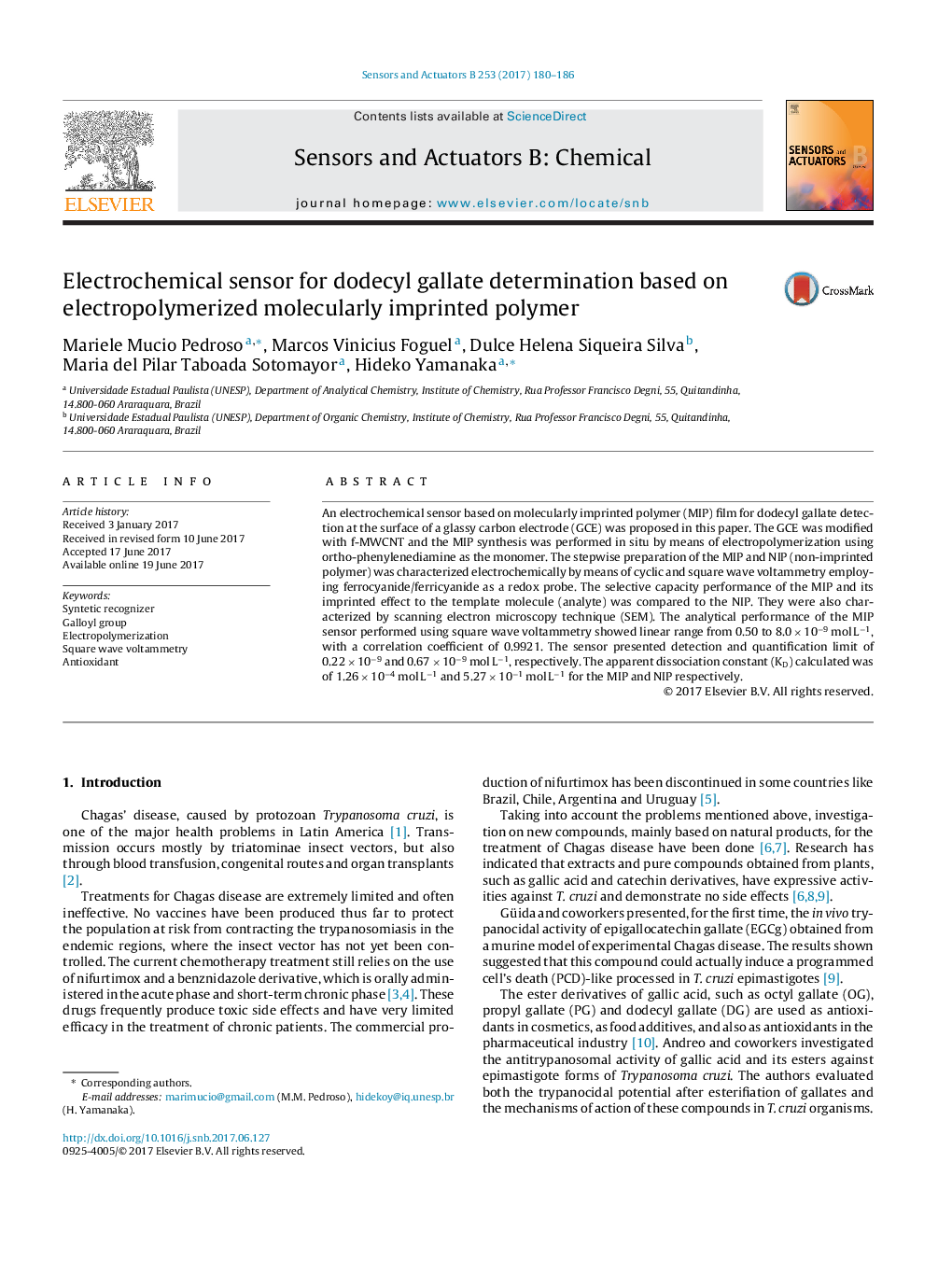| Article ID | Journal | Published Year | Pages | File Type |
|---|---|---|---|---|
| 5008961 | Sensors and Actuators B: Chemical | 2017 | 7 Pages |
â¢The methodology allows to determination of the dodecyl gallate using molecularly polymer imprinting technology.â¢This method allows the use of MIP for on-site routine monitoring and screening.â¢The imprinted polymer proposed exhibited selectivity to galloyl group present in the dodecyl gallate, a compound with tripanocide properties.â¢Kd indicates a large binding affinity between the polymer and analyte.
An electrochemical sensor based on molecularly imprinted polymer (MIP) film for dodecyl gallate detection at the surface of a glassy carbon electrode (GCE) was proposed in this paper. The GCE was modified with f-MWCNT and the MIP synthesis was performed in situ by means of electropolymerization using ortho-phenylenediamine as the monomer. The stepwise preparation of the MIP and NIP (non-imprinted polymer) was characterized electrochemically by means of cyclic and square wave voltammetry employing ferrocyanide/ferricyanide as a redox probe. The selective capacity performance of the MIP and its imprinted effect to the template molecule (analyte) was compared to the NIP. They were also characterized by scanning electron microscopy technique (SEM). The analytical performance of the MIP sensor performed using square wave voltammetry showed linear range from 0.50 to 8.0 Ã 10â9 mol Lâ1, with a correlation coefficient of 0.9921. The sensor presented detection and quantification limit of 0.22 Ã 10â9 and 0.67 Ã 10â9 mol Lâ1, respectively. The apparent dissociation constant (KD) calculated was of 1.26 Ã 10â4 mol Lâ1 and 5.27 Ã 10â1 mol Lâ1 for the MIP and NIP respectively.
Graphical abstractDownload high-res image (96KB)Download full-size image
